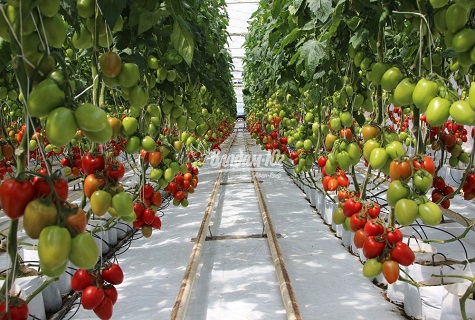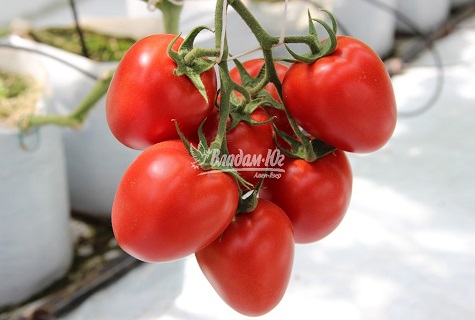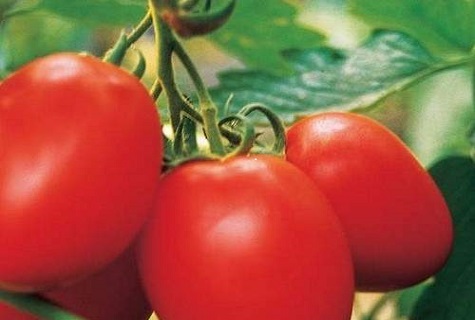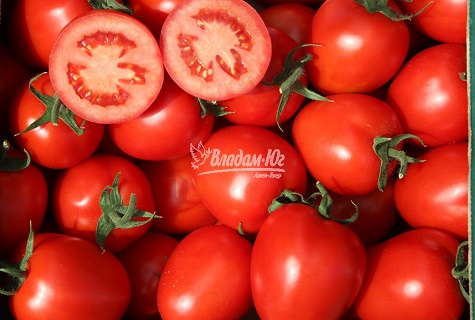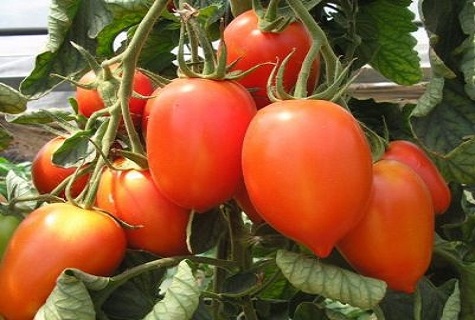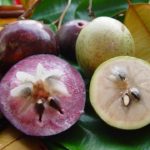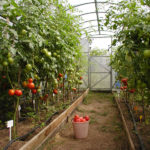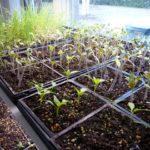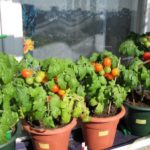Tomato Kolibri f1 was bred by French breeders and is an early indeterminate variety. The plant has a powerful structure and short internodes. With proper care, the crop will bear fruit until the cold weather. The tomato is a hybrid tomato "Cream"». The tomato is successfully adapted to different climates and soil types. Also flexible to different lighting conditions.
Plant characteristics
The plant itself is powerful and usually has two stems with 8-10 ovaries. Hummingbird f1 has a good immune system and is resistant to late blight.The distance between the nodes is small, and there is a knee near the stalk, making it convenient to collect ready-made vegetables. The plant is tall and therefore requires staking and pinching. The tomato, due to its power, produces large fruits. The leaves are medium in size and range from green to dark green. The leaf blade, like the stem, is characterized by its power and good growth zone. In addition, the tomato has an excellent developed root system, thanks to which it develops well and rarely gets sick.
Description of fruits
The fruit has a red “cream” shape. The fruit itself is quite fleshy, with an interesting sweet and sour taste. Tomato always produces a high yield. Tomatoes are great for fresh salads, juices and canning. The fruit is quite dense, with thick walls, average weight 160 grams. Fruit diameter 30 mm. During ripening, the tomato does not contain a green spot, stem or veins inside, due to which it has excellent, delicate taste.
The ripening period is 95 days. It is considered an early ripening plant.
The fruits are characterized by good keeping quality. When preserved, due to their compactness, they do not burst. Therefore, in winter, such tomatoes can be placed on the table as a delicacy. The Hummingbird tomato can be transported over long distances without any problems.
The tomato is heat-loving. For cultivation, both a greenhouse, a balcony, and open ground are suitable. The main thing is to plant after the threat of frost has passed.
Pros and cons of the plant
The plant has more positive qualities than negative ones. The bred breed has recently been able to gain trust, reviews and popularity among many gardeners. The advantages of the plant are:
- Indeterminateness;
- High yield;
- The plant has a good immune system and is resistant to many viruses and diseases;
- The tomato does not require frequent care;
- The fruits are fleshy and characterized by good keeping quality and are easy to transport;
- Vegetables do not crack when preserved;
- The tomato is adapted to different growing zones;
- The variety has early ripening periods.
The downside of the plant is that it needs to be tied up and pinched. Also, the crop is a hybrid, so you cannot get the seeds yourself. But thanks to a good harvest, the crop is worth it.
How is sowing done?
Favorable predecessors of this variety are cucumbers, carrots, onions, and legumes. Seeds are usually sown at the end of March. For this purpose, special soil is prepared, well fertilized and rich in vitamins and minerals, which is necessary for the nutrition of tomatoes. The seeds are treated with a weak solution of manganese and sown to a depth of 2 cm, after which abundant watering is carried out. The box is covered with a special film and placed in a warm and bright place.
After the seeds germinate and the first leaves appear, the tomatoes need to be picked. After this, you need to feed the seedlings a couple of times. Before the plant is planted in open areas, it must be hardened off. To do this, the seedlings must be taken outside 10 days before planting. The plant is planted at the age of 55 days. Planting is usually done in mid-June, when frost has passed. Before planting, it is better to treat the soil with a weak solution of potassium permanganate.
Although the plant has a good immune system, it is still recommended to treat the leaves against external pests such as aphids and cabbageweed.
If planting will be done in a greenhouse, it can be done a month earlier.The planting scheme is as follows: 7-9 tomatoes fit into one square meter and feel comfortable.
Then it comes down to small things. It is necessary to care for the bushes, water them regularly, and loosen the soil. It is recommended to use warm water for irrigation.
Conclusion
Thus, Kolibri tomatoes are a fairly successful breeding crop, resistant to diseases and giving its owner a good harvest.

